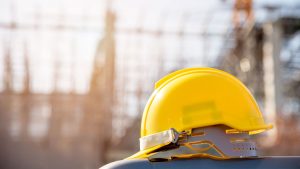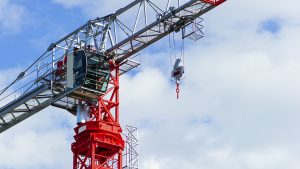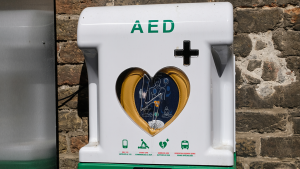A construction worker trapped in a trench in Oshawa and subsequently rescued by firefighters has died in hospital.
On June 19, the victim, who was working for Orin Contractors Corporation on water and sewer abatement on Verdun Road, was pinned under part of an excavator in the trench, after being struck by a bucket that was attached to a crane.
It took a crew of 30 fire personnel about two hours to free the man, who was then transported to Lakeridge Health with life threatening injuries.
The Ministry of Labour (MOL) confirmed the man had succumbed to his injuries June 21.
The name of the victim has not yet been released.
“It was a very difficult rescue for our crews,” explained Oshawa Fire Chief Derrick Clark the day of the incident.
“They had to secure the trench first of all to make sure the trench was safe and we also had a gas leak…so there was natural gas pouring into the trench and that acts as a suffocant as well so we were getting oxygen down there as quickly as we could trying to mitigate the gas rupture and secure the trench and trying to get the equipment off him.
“The equipment itself that he was pinned under was, we estimate, anywhere from five to 8,000 pounds…While we were rescuing him he was conscious and talking to our crew. As we pulled him out he did lose consciousness with vital signs absent once we got him out and transported him to the ambulance.”
The MOL was notified about the injured worker when the incident occurred and attended the scene. Inspectors issued several requirements to Orin Contractors Corporation, to not disturb the scene and two orders to provide documentation. The investigation is ongoing.
“Our investigation process remains the same,” said Janet Deline, spokesperson for the ministry, in an email to the Daily Commercial News June 21.
“Our investigators may examine the incident location and/or any equipment, interview witnesses such as co-workers or anyone else that might have relevant information, request assistance from one of the ministry’s professional staff such as an engineer or ergonomist or, if necessary, issue orders to address contraventions of the Occupational Health and Safety Act and regulations.”
The rescue itself was quite an extensive operation, the chief said.
“Part of our rescue procedures is that we shore the walls of the trench first,” said Clark.
“Using heavy rescue shoring, we put materials down into the trench, shore the walls of the trench so no more further collapse can occur and once that happens we can get crews in there to work to free the victim. At the same time, we had a separate operation going on to rig the heavy equipment down there to try and pull that off him.”
He added, “A trench situation, it’s very complex, very painstaking. If we don’t secure the walls more dirt will fall in and if any dirt falls on any of our staff that could be life threatening for them as well. It’s very dangerous and very unstable.”









Recent Comments